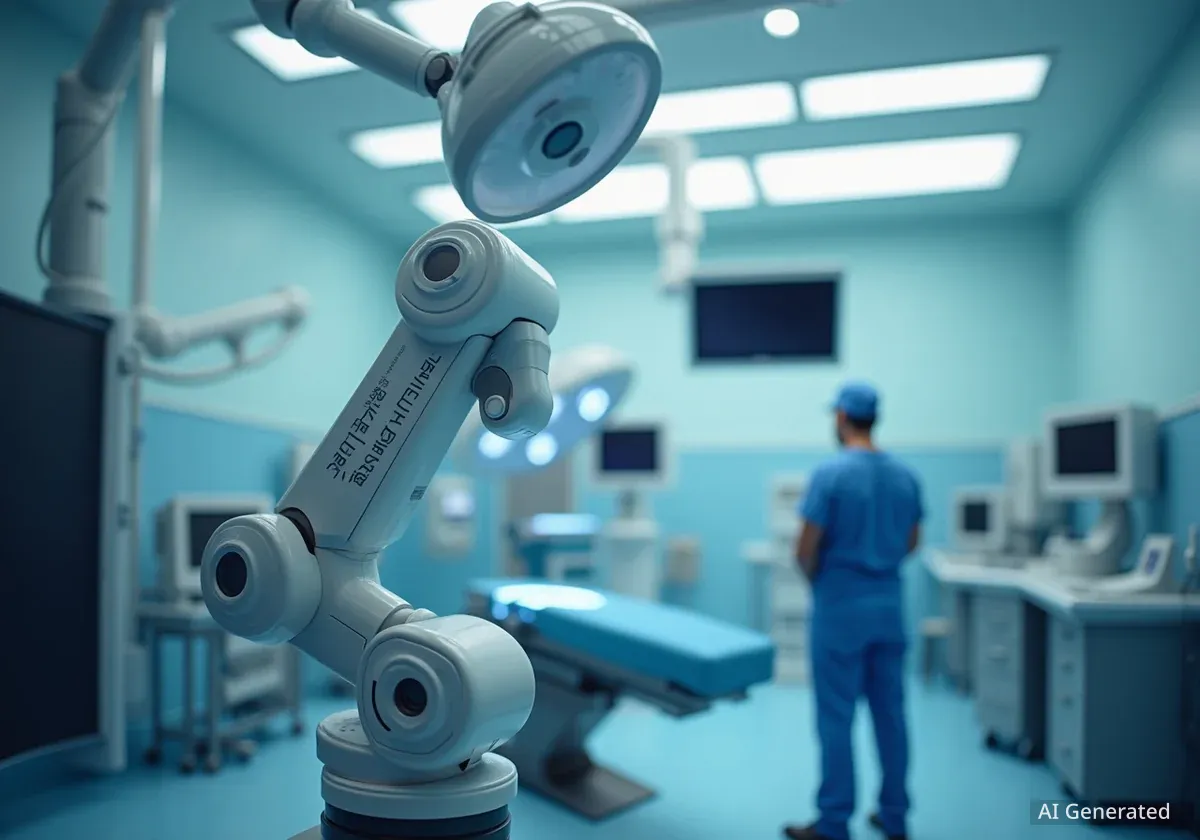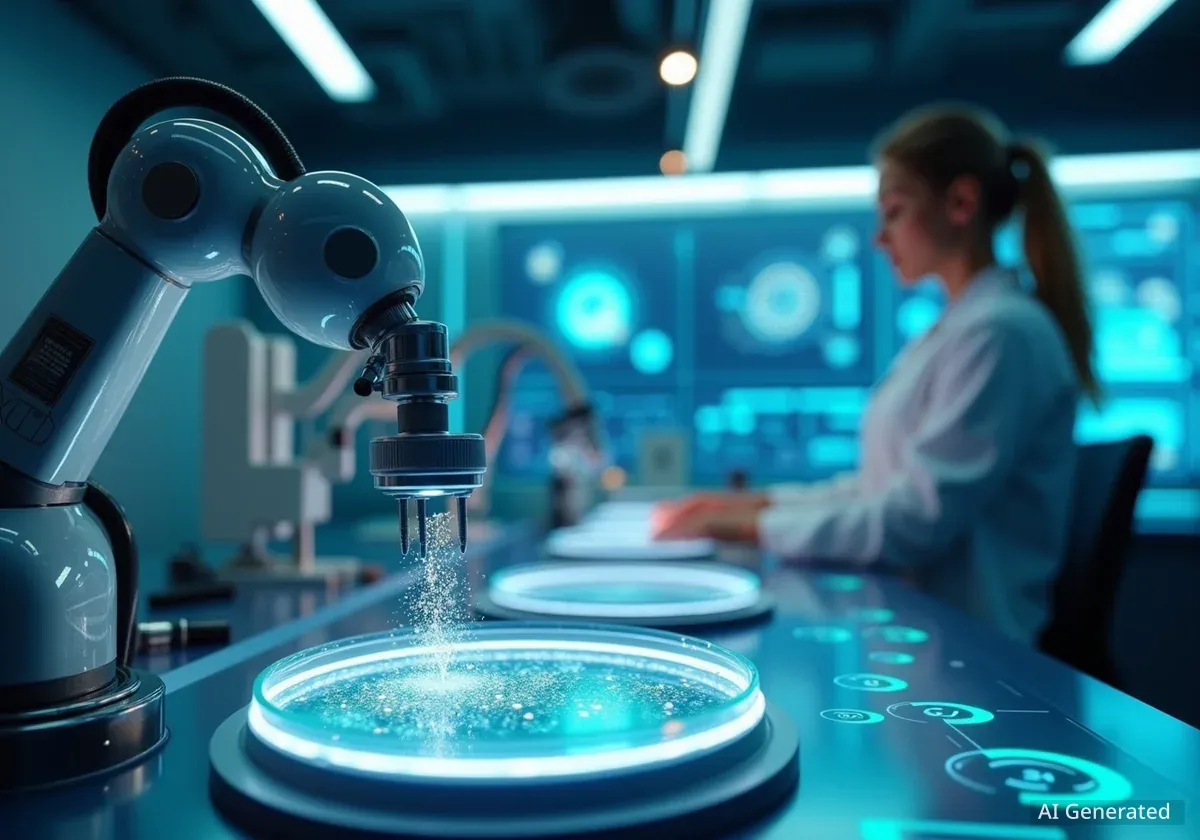Columbia Memorial Hospital (CMH) is enhancing its surgical capabilities with new artificial intelligence (AI) powered robotic technology. This advancement is part of an expansion at the CMH-OHSU Health Urology Clinic. The clinic has introduced Aquablation therapy, using the HYDROS Robotic System, to treat benign prostatic hyperplasia (BPH).
Key Takeaways
- CMH-OHSU Health Urology Clinic now offers AI-powered Aquablation therapy.
- This treatment helps men with benign prostatic hyperplasia (BPH).
- The HYDROS Robotic System uses a heat-free water jet for precise tissue removal.
- It aims to reduce side effects compared to traditional BPH surgeries.
- CMH is the first facility on the Oregon and Washington coast to offer this technology.
New AI-Powered Robotic System for BPH Treatment
The HYDROS Robotic System represents a significant step forward in urological care. It uses advanced artificial intelligence to guide a specialized water jet. This jet precisely removes excess prostate tissue.
A key feature of this technology is its heat-free operation. This helps to protect surrounding tissues. The goal is to minimize complications often associated with traditional surgical methods.
"There are several options for the treatment of BPH; a more invasive option might include a surgical incision into the abdomen, typically resulting in a longer recovery, more pain and bleeding," said Sarah Bello, director of communication at CMH. "Aquablation is performed through the urethra, requiring no abdominal incisions."
According to Sarah Bello, Director of Communication at CMH, this is the first time such technology is available on the Oregon and Washington coast. Previously, patients had to travel to locations like Portland, Olympia, Washington, or Seattle for this specific therapy.
Understanding Benign Prostatic Hyperplasia (BPH)
Benign prostatic hyperplasia, or BPH, is a common condition affecting older men. It involves an enlarged prostate gland. The prostate surrounds the urethra, the tube that carries urine from the bladder.
When the prostate enlarges, it can press on the urethra. This pressure restricts the flow of urine. This restriction can lead to various urinary symptoms and, if left untreated, more serious health issues.
BPH Statistics
- Approximately 50% of men aged 51 to 60 experience BPH.
- This percentage increases to 70% for men between 60 and 69 years old.
- Around 80% of men over 70 years of age are affected by BPH.
Potential Complications of Untreated BPH
Ignoring BPH symptoms can lead to severe complications. These include bladder or kidney damage. Other risks are bladder stones, and urinary incontinence. In some cases, permanent kidney and bladder damage can occur.
Benefits of Minimally Invasive Aquablation Therapy
Traditional surgical treatments for BPH often carry risks of side effects. These can include sexual dysfunction or loss of urinary control. Aquablation therapy aims to reduce these risks.
The HYDROS system uses AI to ensure precision. This precision helps in removing only the necessary tissue. It works to preserve critical functions like sexual health and urinary continence.
"BPH is a common condition that can severely compromise a man’s quality of life," stated Dr. John Mansfield, a board-certified urologist at the clinic. "When advanced, it can also significantly affect kidney function. We’re pleased to now offer Aquablation therapy in Astoria so patients can reclaim their lifestyles with minimal downtime and side effects."
Dr. John Mansfield, a board-certified urologist at the clinic, emphasized the importance of this new option. He highlighted its potential to improve patients' quality of life with fewer long-term complications and quicker recovery.
How the HYDROS Robotic System Works
The HYDROS Robotic System is operated by a urologist from the CMH-OHSU Health Urology Clinic. A surgical team assists during the procedure. This team includes nurses, anesthetists, technicians, and other caregivers.
The system's AI capabilities are built on extensive data. It has learned from over 50,000 previous procedures. This experience allows for smart AI tools that assist with treatment planning and advanced imaging.
AI in Surgical Procedures
The use of AI in surgery improves efficiency and consistency. For the surgical team, it makes procedures easier to perform. For patients, it often leads to more predictable and positive outcomes.
The AI-powered precision helps ensure consistent results for patients. It also makes the procedure more efficient for the surgical teams. This combination of advanced technology and skilled medical professionals aims to deliver superior patient care.
CMH's Commitment to Advanced Technology
The introduction of Aquablation therapy is not CMH's first venture into AI-powered robotics. The hospital already uses Mako SmartRobotics for robotic-assisted total joint replacements.
In 2023, CMH became the first hospital on the Oregon and Washington coast to offer total joint surgeries using the Mako system. This demonstrates a continuous commitment to integrating cutting-edge technology into patient care.
The hospital plans further expansion of its robotic surgical options. Sarah Bello confirmed these plans. "When the hospital expansion is completed in 2027, we anticipate offering more robotic surgical options," she noted. This suggests a future where more patients will benefit from minimally invasive, AI-assisted procedures at CMH.





